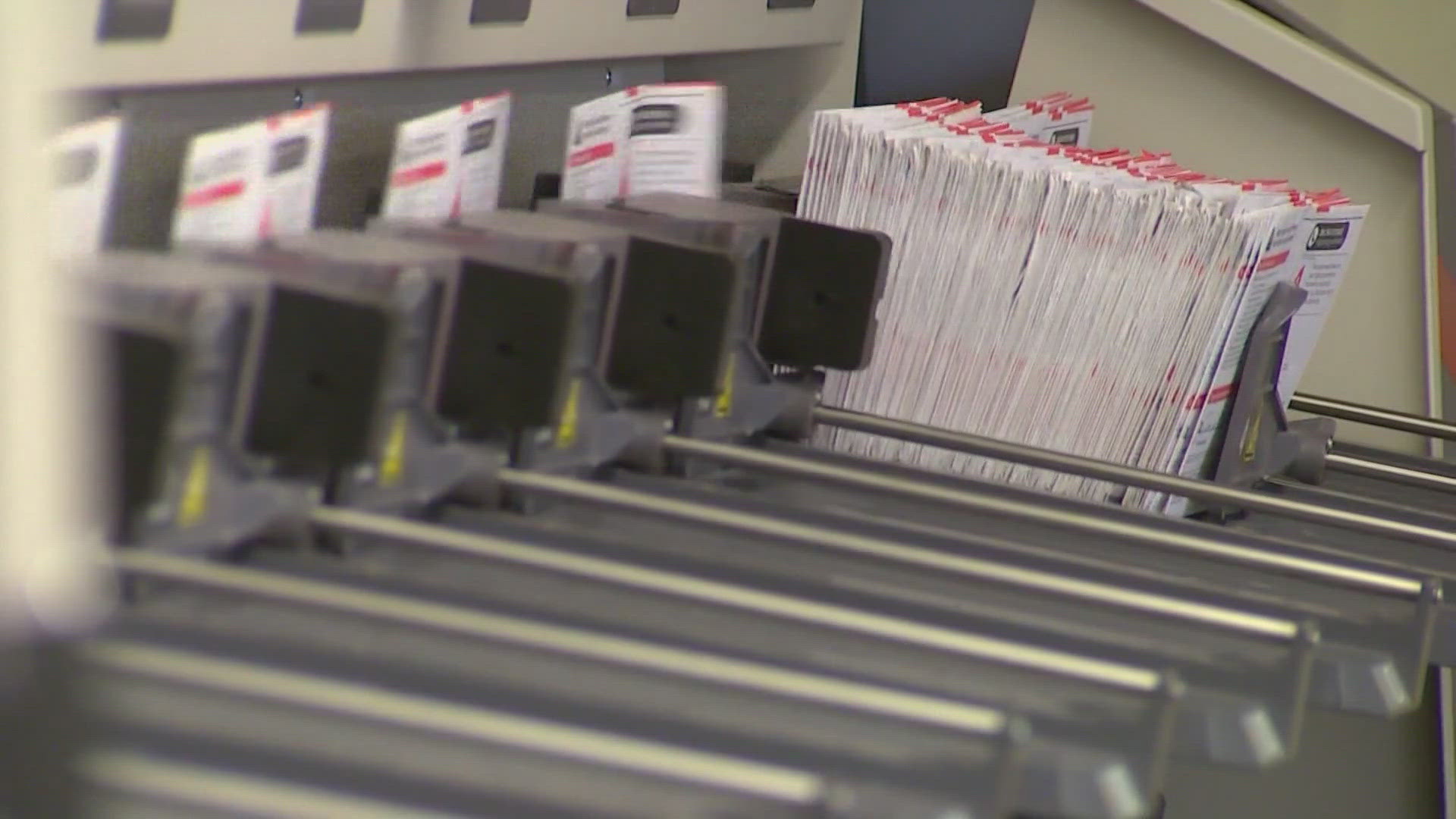SPOKANE, Wash. — The 2024 Washington primary election is Tuesday, and here is what you need to know.
Washington's regularly scheduled primary elections always happen on the first Tuesday of August. The two candidates who receive the most votes will then move on to the General Election in November.
The August Primary Elections do not include the President or Vice President.
Voting results will be posted shortly after 8 p.m. on Primary Election Day (August 6), then the results will be updated on weekdays at 4 p.m. until the election is certified on Tuesday, August 20.
The deadline to receive new registrations and voter updates online and by mail was Monday, July 29. The deadline for in-person registration and voter updates is Tuesday, August 6 at 8 p.m.
What is the process to certify votes?
Before an election:
Testing and certification of voting systems -- Counties choose their own voting systems, but they have to be certified by an independent testing authority and the State of Washington. The tests include security reviews as part of its overall testing efforts. Voting systems are operated on an air-gapped network, which means they cannot connect to the Internet and it is incapable of wireless communication.
- Click here to see the voting systems by County.
- Click here to see approved voting systems.
County review -- The Office of the Secretary of State reviews each county periodically to ensure all election laws and rules are being followed properly. After confirmation, the county receives a report of changes needed and a follow-up visit to make sure all changes have been made.
Certification of election administrators -- Elections in Washington are run by Certified Election Administrators. For someone to become certified, they need to attend a two-day Elections 101 class, obtain 40 hours of work-related education, as well as pass an exam that tests their knowledge of election laws and procedures. They also need to work in elections for two years to gain experience before they are certified.
Pre-election audit: logic and accuracy test -- Before every election, counties will test their voting systems to make sure they are set up to accurately count votes. Election officials will scan a stack of ballots with a known outcome to make sure the voting system reports the same answer.
Voter registration database (VRDB) -- Washington's statewide voter registration database is constantly being maintained and updated as voters register, move, change their name, die, or are no longer eligible to vote. All active voters automatically receive mailed ballots.
During an election:
Paper ballots -- In Washington, everyone votes on paper ballots. The reason is that it is easier to view and confirm our choices before signing and sealing. Paper ballots also allow local election officials to audit the results of an election after the votes are counted.
Vote WA -- You can check the status of your ballot in VoteWA, Washington's statewide voter registration database. When your ballot arrives at the election's office, the barcode that is on the outer envelope is scanned. After scanning, it will update your voter record in VoteWA and your status will say "Received". This way, it will prevent anyone from casting more than one ballot.
Signature checking -- When you vote, you sign an oath swearing your eligibility to vote. Your signature is then compared to the signature in your voter registration file to confirm your eligibility and identity. If there is a time when your signature is missing or doesn't match up with the signature on your ballot, then your ballot is considered "challenged" and you will be notified. You will then have the opportunity to update your signature on file to make sure your vote is counted.
Chain of custody -- Once your signature is verified, your ballot status will be updated to say "Accepted". Your ballot will then be opened and separated from the original signature envelope. At this point, your ballot is anonymous and grouped along with other ballots to be scanned.
- Ballots are sealed in secured containers throughout the election. A minimum of two staff are present at all times when your ballot is handled.
Scanning and tabulation -- Ballots will be scanned throughout the 18-day voting period. During this time, each ballot will be processed and accepted. Tabulation (counting the votes on the ballots) begins after 8 p.m. on Election Day. Since ballots are previously scanned, it will only take a few seconds to count the votes on the computer. This is the reason you will have preliminary election results shortly after 8 p.m.
After an election:
Post-election random batch audits -- Right after Election Day, local election officials will check to make sure the voting systems are counting each vote correctly. They will hand count randomly selected precincts or ballot batches and then compare those numbers to the voting system totals.
Post-election risk-limiting audits -- Risk-limiting audits use statistics to make sure the winner is truly the winner. Election officials will compare randomly selected ballots to the voting system results. If the results of an election are close, they will check more ballots.
Full ballot reconciliation -- As ballots arrive, local election officials will keep detailed records of the steps taken to process each ballot or group of ballots. A final report is made at the end of the process, which includes a summary of how many ballots were received, how many ballots were counted, how many ballots remained with the "Challenged" status and were rejected by the county Canvassing Board. Comparing the number of ballots throughout the process ensures that every ballot is received and handled properly.

